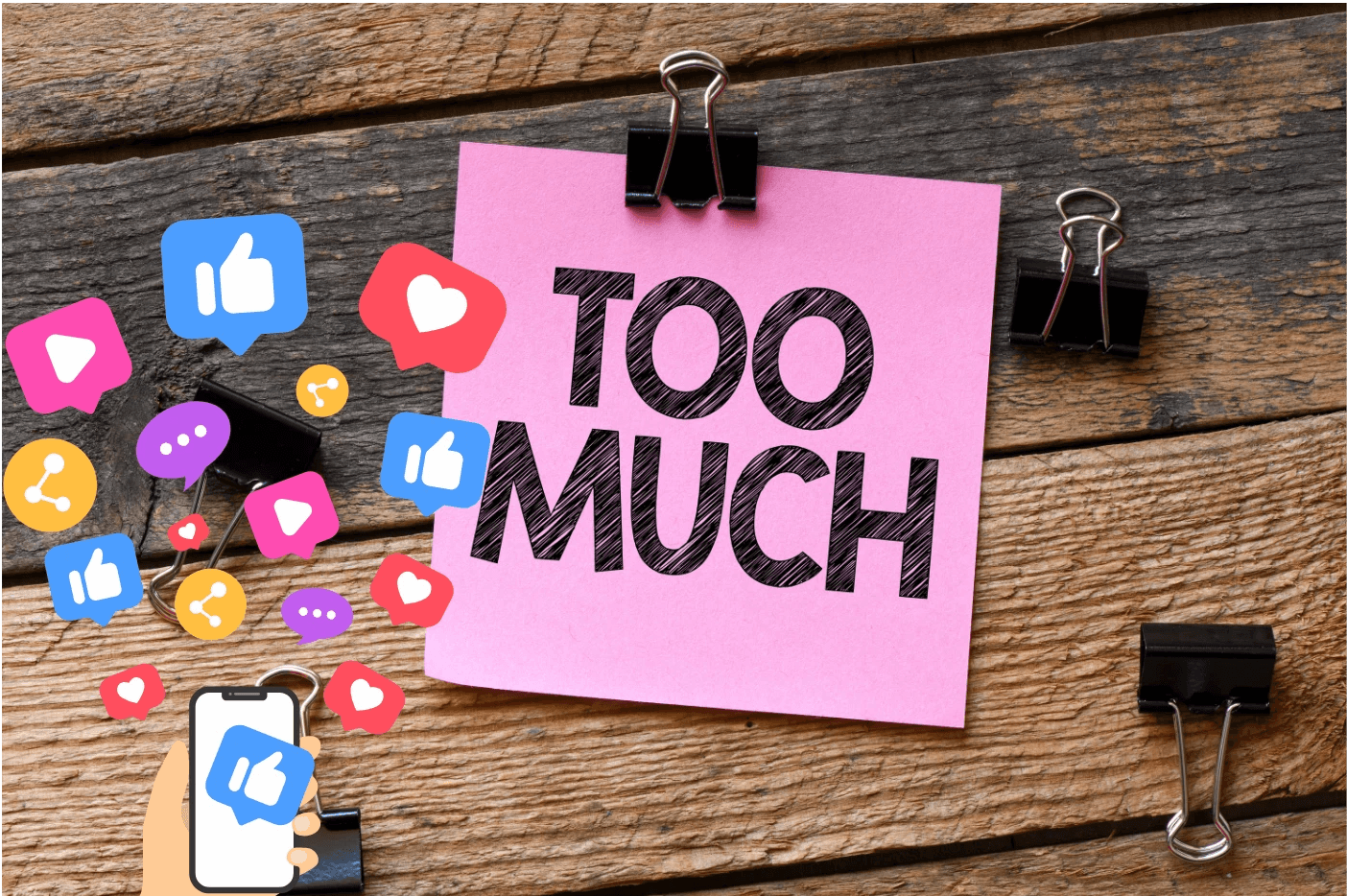How Much Communication is Too Much?
16 juil. 2024
Ron Cors
In a world characterized by constant connectivity, we find ourselves immersed in a sea of communication channels. From email to social media, the options to stay connected seem endless. But have we reached a saturation point? Is there such a thing as too much communication? This article delves into the intricacies of communication overload and explores whether there is a threshold at which it becomes counterproductive.
With our lives becoming increasingly intertwined with technology, it's easy to get caught up in the frenzy of constant communication. However, incessant notifications and pings can be overwhelming, leaving us feeling drained and distracted. Finding the right balance between staying connected and maintaining our sanity can be a challenge.
Understanding the impact of excessive communication is crucial, especially in personal and professional relationships. Are we sacrificing quality for quantity? Are we really connecting or simply creating noise in the digital realm?
Join us as we navigate the realm of communication and unravel the complexities of finding the sweet spot. Discover how much communication is too much and learn strategies to optimize your interactions in a world hungry for connection.
The Importance of Communication in Personal and Professional Relationships
Communication is the cornerstone of any meaningful relationship, whether it's personal or professional. It is the foundation upon which we build understanding, trust, and connection with the people in our lives. Effective communication allows us to express our thoughts, feelings, and needs, while also listening and understanding the perspectives of others.
In personal relationships, communication is essential for maintaining intimacy, resolving conflicts, and deepening our bonds with loved ones. When we communicate openly and honestly, we create a safe space for vulnerability, empathy, and mutual growth. Conversely, a lack of communication can lead to misunderstandings, resentment, and the gradual erosion of the relationship.
Similarly, in the professional realm, communication is a critical skill that enables us to collaborate effectively, resolve issues, and achieve our goals. Whether it's communicating with colleagues, clients, or superiors, the ability to articulate ideas, provide feedback, and engage in constructive dialogue is essential for success. Effective communication can enhance teamwork, improve decision-making, and foster a positive work environment.
Understanding the Different Forms of Communication
Communication takes many forms, each with its own unique characteristics and nuances. The most common forms of communication include verbal, non-verbal, written, and digital.
Verbal Communication: Refers to the exchange of information through spoken words, tone, and inflection. This form allows for immediate feedback and the opportunity to clarify and expand on ideas.
Non-Verbal Communication: Encompasses body language, facial expressions, and gestures, which can convey meaning without the use of words.
Written Communication: Includes emails, reports, and memos, providing a more formal and documented means of exchanging information. It allows for thoughtful and precise expression but can lack the immediacy and nuance of verbal interactions.
Digital Communication: Enabled by various technological platforms, offering a range of options from instant messaging to video conferencing.
Understanding the different forms of communication and their respective strengths and weaknesses is crucial for effectively navigating personal and professional relationships. By being mindful of the appropriate communication channels and adapting our approach accordingly, we can enhance the quality and impact of our interactions.
The Benefits of Effective Communication
Effective communication is a powerful tool that can yield numerous benefits in both our personal and professional lives. When we communicate effectively, we are able to build stronger relationships, enhance collaboration, and achieve better outcomes.
Personal Relationships
In personal relationships, effective communication can lead to deeper understanding, empathy, and trust. By expressing our thoughts and feelings clearly and actively listening to others, we are better able to address conflicts, resolve misunderstandings, and strengthen the emotional bonds we share with our loved ones. Effective communication also enables us to navigate life's challenges and transitions with greater ease and resilience.
Professional Success
In the professional realm, effective communication is a key driver of success. It allows us to collaborate more efficiently, share information more effectively, and make more informed decisions. Effective communication can also enhance our leadership skills, as it enables us to inspire and motivate our teams, provide constructive feedback, and navigate complex workplace dynamics. Moreover, effective communication can improve our problem-solving abilities, as we are better able to understand the perspectives of our colleagues and work together to find solutions.
Ultimately, the benefits of effective communication extend far beyond the individual level. When we communicate effectively, we foster stronger, more cohesive communities, both personal and professional. By bridging the gap between people and ideas, effective communication paves the way for greater understanding, cooperation, and collective progress.
Signs of Excessive Communication
While communication is essential for maintaining healthy relationships and achieving professional success, there is such a thing as too much communication. Excessive communication can lead to a range of negative consequences, both in our personal and professional lives.
Constant Need to Be in Touch: An incessant stream of messages, calls, and notifications can create a sense of anxiety and a feeling of being "always on," making it difficult to disconnect and recharge.
Lack of Focus and Decreased Productivity: Constant influx of information can lead to distractions, making it hard to concentrate and complete tasks efficiently.
Inability to Have Meaningful Conversations: Short exchanges and constant bombardment of information can hinder deeper, more substantive discussions.
Lack of Boundaries and Prioritization: Without clear boundaries, individuals may find themselves responding to messages during personal time, leading to burnout and stress.
The Negative Effects of Too Much Communication
Excessive communication can have a profound impact on our mental and emotional well-being, as well as our overall quality of life. When we are constantly inundated with information and demands for our attention, it can take a significant toll on our physical and psychological health.
Increased Stress and Anxiety: The constant pressure to stay connected and respond to messages can create a sense of urgency and feeling of being overwhelmed, leading to heightened levels of cortisol, the stress hormone.
Diminished Focus and Productivity: Constantly switching between different communication channels and tasks can make it difficult to maintain deep concentration, resulting in decreased efficiency and lower-quality work.
Negative Impact on Personal Relationships: Constant distraction by devices and preoccupation with responding to messages can lead to disconnection and resentment, weakening the quality of relationships.
Finding the Right Balance in Communication
Navigating the complexities of communication in today's digital age requires a delicate balance. While communication is essential for personal and professional success, finding the right balance is crucial for maintaining our well-being and fostering meaningful connections.
Setting Boundaries
Achieving this balance involves recognizing the importance of setting boundaries and prioritizing our communication needs. This may involve establishing clear guidelines around when and how we engage with different communication channels, as well as learning to say "no" to unnecessary or excessive communication demands.
Intentional Communication
Another key aspect of finding the right balance is being intentional about the way we communicate. This means being mindful of the communication channels we choose, the tone and content of our messages, and the frequency of our interactions. By tailoring our communication approach to the specific context and needs of the situation, we can ensure that our interactions are meaningful, productive, and aligned with our personal and professional goals.
Continuous Adjustment
Ultimately, striking a balance in communication requires a continuous process of self-reflection and adjustment. It may involve experimenting with different strategies, seeking feedback from others, and being willing to adapt as our needs and circumstances change. By embracing this process, we can cultivate a healthier and more fulfilling relationship with communication, one that enhances our personal and professional lives rather than detracting from them.
Tips for Managing Communication in Personal Relationships
Maintaining healthy and fulfilling personal relationships requires a thoughtful approach to communication. Here are some tips for managing communication in your personal life:
Prioritize Face-to-Face Interactions: While digital communication can be convenient, prioritize in-person interactions whenever possible for deeper connection.
Set Boundaries and Manage Expectations: Establish clear boundaries around communication, such as preferred channels and response times, to prevent communication from becoming overwhelming.
Practice Active Listening: Make a conscious effort to truly listen and understand the perspectives of loved ones, avoiding interruptions and reflecting back what you've heard.
Schedule Regular Check-Ins: Carve out dedicated time for in-depth, uninterrupted conversations to stay connected and address any issues.
Embrace Technology Thoughtfully: Be mindful of how you use digital communication, avoiding constant texting or social media scrolling during quality time.
Communicate Openly and Honestly: Foster trust and vulnerability by expressing your thoughts, feelings, and needs openly.
Engage in Mindful Communication: Be present and attentive during interactions, avoiding multitasking or distractions.
By implementing these strategies, you can cultivate more meaningful, fulfilling, and balanced personal relationships, where communication serves to strengthen the bonds you share with your loved ones.
Tips for Managing Communication in the Workplace
Effective communication in the workplace is essential for collaboration, productivity, and professional success. Here are some tips for managing communication in the professional realm:
Establish Clear Communication Protocols: Work with your team to establish guidelines around communication, such as preferred channels and response times.
Prioritize Face-to-Face Interactions: Make an effort to have in-person meetings or video conferences whenever possible to foster better understanding and trust.
Utilize Appropriate Communication Channels: Match the communication channel to the context and urgency of the message, using email for formal communications and instant messaging for urgent matters.
Practice Active Listening: Listen attentively, ask clarifying questions, and demonstrate understanding to build trust and resolve conflicts.
Provide Clear and Concise Communication: Strive for clarity and conciseness, avoiding jargon and structuring messages for easy understanding.
Manage Availability and Responsiveness: Set boundaries around availability and communication to maintain focus and avoid burnout.
Embrace Feedback and Continuous Improvement: Regularly seek feedback on communication skills and use it to refine your strategies.
Striking a balance in communication

In a world where communication is ubiquitous and constantly evolving, finding the right balance is crucial for our personal and professional well-being. While communication is essential for building relationships, fostering collaboration, and achieving our goals, excessive or mismanaged communication can lead to a range of negative consequences, from increased stress and anxiety to diminished productivity and strained relationships.
The key to striking a balance in communication lies in our ability to be intentional, mindful, and adaptable. By setting clear boundaries, prioritizing meaningful interactions, and leveraging the strengths of different communication channels, we can cultivate a healthier and more fulfilling relationship with communication.
In our personal lives, this may involve prioritizing face-to-face interactions, establishing communication protocols, and practicing active listening. In the professional realm, it may involve implementing clear communication protocols, utilizing appropriate channels, and continuously seeking feedback to refine our approach.
Ultimately, the path to effective communication is not a one-size-fits-all solution. It requires a deep understanding of our own needs, the needs of those around us, and the nuances of the communication landscape. By embracing this process of self-reflection and adaptation, we can unlock the full potential of communication, allowing it to enrich our lives and empower our relationships, both personal and professional.
As we navigate the ever-evolving world of communication, let us remember that the true measure of success is not in the quantity of our interactions, but in the quality of the connections we forge and the meaningful impact we have on the lives of others. By striking a balance in communication, we can cultivate a world where our interactions are not just a means to an end, but a source of genuine fulfillment, growth, and collective progress.





